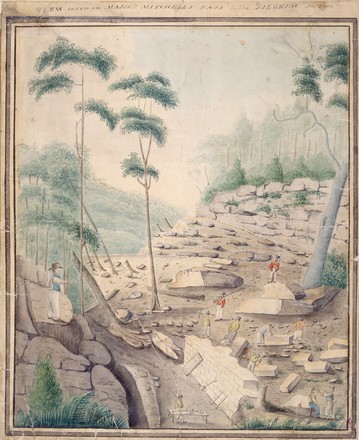
View taken on Major Mitchell's Pass to the Pilgrim Decr 5th 1832
SV1B / Blu M / 20
Watercolour
Watercolour
Before 1830, people who wished to cross the Great Divide were forced to travel long distances on hazardous roads and rickety bridges across very steep terrain. Surveyor- General Thomas Livingstone Mitchell was determined to develop a more direct and safe route through the mountains, by building a road ‘that was built to last.’
Work on Mitchell’s Pass commenced in 1830 under the supervision of the Department of Roads and Bridges, lead by Mitchell. To assist in creating his vision, Mitchell recruited fellow Scottish engineer David Lennox to the role of Superintendent of Bridges. Lennox earned the reputation in the UK for being a skilled engineer who created beautiful stone arch work. This was evident when he designed and supervised the construction of the most important part of Mitchell’s Pass, the arched stone bridge crossing over Lapstone Creek.
‘View taken on Major Mitchell's Pass to the Pilgrim’ is a watercolour that shows the convicts at work on this section of Mitchell’s Pass at Lapstone Hill in 1832. Both the bridge and the pass are excellent examples of surviving convict road works in NSW.


 Back to list
Back to list